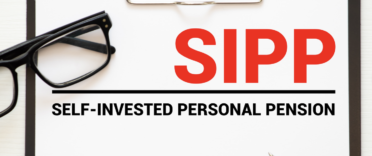 How to pick an investment fund
How to pick an investment fund
Whether you are looking for the best investment funds or best ISA investments or even the best pension funds the choice can seem overwhelming. Yet it doesn't matter whether you are looking at unit, trusts, investment trusts or exchange traded funds (ETFs) there are key criteria you should look for and compare before you decide what to invest in. This article runs through the 12 most important things you should look for when picking an investment fund.
But first...
In this article I run through the 12 keys things to look for when choosing investment funds. But as a useful visual aid i suggest you download the following free guide, plus it can be used for future reference. Whether you are looking to invest in funds for the first time or do so already then download this FREE guide to investing in funds. It is the best guide I've found on the topic and covers everything you need to know, including how to get started with buying funds. I will refer to various parts of this guide throughout this article.
Also I've created a FREE short series of emails that teaches you the techniques and tools that turned £100,000 into £1.1 million. It's FREE for a limited time only. Each of the concise emails will take you just 2 minutes to read and will tell you the simple techniques and tools the City fund managers use - which you can now use to quickly find the best funds to invest in.
12 steps to choosing the best investment funds
Fund manager rating
There are a number of rating systems out there, such as Citywire’s which attempts to evaluate an investment manager’s performance. Citywire give managers who have a better than average performance an A or AA rating. While an AAA rating is only given to the top 5% of UK fund managers. The rating takes into account the level of risk each manager has taken as well as their performance against their benchmark over the preceding 3 years. So check the fund manager’s rating for a subjective yet effective steer as to whether they are any good. Having said that research has shown that over 90% of fund managers fail to beat the market over the long term. So I would not place too much emphasis on the fund manager rating as they tend to be more of a marketing tool for the investment management houses themselves.
The fund’s fees and expenses
Research has shown that 'Low-cost funds outperform high-cost rivals every time'. Investment companies work on the premise that their high fees are justified by their fund’s superior investment returns. The problem is that this simply doesn't stack up in reality. The aforementioned research paper concludes that investors should make ‘cost’ a primary test in fund selection as it is still the most dependable predictor of performance.
If you flick to page 7 of the aforementioned FREE guide to investing in funds it summarises the types of charges to look out for.
It is worth pointing out that investment trusts and exchange traded funds (ETF) are cheaper than unit trusts. Whereas a unit trust will have an ongoing charge (OCF), which is what used to be called the annual management charge, typically of 1% - 1.5%, ETFs can be as cheap as 0.1-0.2%. If you are worried about charges then avoid Fund of Funds as these types of investment funds end up with multiple layers of costs and OCF's, as much as 2% or above. Also, if you do decide to seek investment advice rather than run your own money then you need to factor in the cost of that advice.
In reality the best way to screen funds is to not immediately screen by costs as a lot of investment returns are actually quoted net of charges. Instead once you have your shortlist of potential funds then use cost as a determining factor as to which investment fund to invest in.
Active or Passive funds?
One investment tip is to buy passive funds (such as tracker funds) over active funds (investment funds run by fund managers) as the latter struggle to outperform the former yet charge large fees. Another piece of research has shown that active managers take extra risk and follow the latest trends when things are going badly in pursuit of returns. When the going’s good investment fund managers seem to do well but when things go badly they under-perform simple indexed passive funds (tracker funds). Not exactly what most investors would want to pay for. So there's certainly a case for basing the core of your portfolio around tracker/passive funds. The added benefit is that passive funds are far cheaper than actively managed funds, which relates back to the point above. However, there's a lot of propaganda around the active vs passive issue. The people usually arguing the case for active funds tend to be fund management houses while those championing passive funds tend to be those who create them. In my free email course (as mentioned in the introduction) I explain why both camps are wrong.
Sector and fund manager’s remit
It’s important that you know what a fund can and does invest in. If you are looking for the best UK equity fund then there is little point picking a UK corporate bond fund or one that invests in Japan. Similarly if you are looking for the best growth fund or the best income fund you need to make sure that the fund is designed to meet those requirements.
If you jump to page 10 of the aforementioned FREE guide to investing in funds* there is a table which lists the annual returns from the main fund sectors over the last decade. Keep this to hand as it will prove useful in future.
Yet it is most important to not judge a book by its cover. This has been beautifully illustrated by the £7.7millon fine handed to Barclays by the FCA (previously the FSA) back in 2011 for advice relating the AVIVA Global Balanced Income Fund and the AVIVA Global Cautious Income Fund. Fund categorisation can also be misleading. For example cautious investors might, unsurprisingly, turn to a Cautious Managed funds, but, under the rules of the Investment Management Association (IMA) cautious managed funds can invest as much as 60 per cent of their assets in equities (depending on the sector they are in), but only need to have 30 per cent or more in safer fixed-interest investments, such as gilts and cash. This might not be cautious enough for some investors.
Also consider what overall impact the fund will have on your portfolio's asset allocation and risk. If you are picking a fund to compliment others within your portfolio from the same sector, e.g. UK equities, is the new fund sufficiently different to your existing ones to offer some form of diversification? Or is it invested in the same companies as other funds in your portfolio? Diversification reduces a portfolio's risk – duplication does not. Fundslibrary.co.uk (run by Hargreaves Lansdown - HL funds) is a fantastic free online resource which allows you to easily compare and contrast funds and their holdings.
Consider a fund's portfolio turnover rate
A fund's portfolio turnover rate measures how often a manager buys and sells securities. A high turnover rate indicates that the manager does not hold on to stocks for very long. This may indicate active management but on the flip-side it can lead to higher trading costs and indicate a short term investment approach. By contrast a low turnover rate would indicate a manager with a long term buy and hold view to investment. You can find information of the turnover rate by using the above Fundslibrary link.
Performance and technical risk ratios
The standard risk warning that you will see on all financial literature is that 'past performance is not indicative of future returns', or a variation thereof. Now this is true for a number of reasons. But the analogy I would use to counter it slightly is 'would you accept a lift from someone with a history of regularly drink driving?' My point being is that if someone has a terrible track record then while this shouldn't be the sole basis of a decision it certainly provides food for thought.
As mentioned earlier there are fund manager ratings out there which aim to rank a fund manager's performance but they are purposely simplistic to aid understanding. However, there a number of objective statistics out there as well which can give you an insight into a manager's performance as well as the amount of risk they are taking with your savings. Here are a couple of statistics you may want to look at:
Alpha
Alpha is a figure which measures a manager’s apparent skill at picking winning investments versus their benchmark. Alpha is the excess return versus the return of a fund's benchmark. So a fund with a positive alpha indicates that the fund manager has outperformed. While a negative alpha figure would indicate underperformance. So clearly you want to pick funds that have a positive alpha figure as it means that the manager is making returns ahead of what the general market is doing. A positive alpha of 1% means the fund has outperformed its benchmark by 1%. Similarly, a negative alpha of -1% would indicate an underperformance of 1%. So the higher the alpha the better.
Beta
Beta is a measure of the sensitivity of a fund to general market movements. The market has a beta of 1 by definition. If a fund has a beta of 1.5 then that means that the fund's return moves in the direction of the general market but to a larger degree. So if the market goes up by 2% the fund will go up by 3%. Conversely if the market falls 2% then the fund will fall 3%. Clearly, an index tracker fund should have a beta of 1. Yet a fund can have a negative beta figure. If a fund has a negative beta then it indicates that as the market falls the fund tends to rise.
Volatility
Volatility is usually measured by standard deviation. Standard deviation shows how much a fund’s returns vary from its average over a given period. A low standard deviation figure would suggest that a fund's returns have been fairly consistent and not deviated much from its long-term average. So if a fund has an average annual return of 10% but a volatility of 15%, this means that the range of returns has varied between -5% to +25%. This high volatility obviously could give rise to higher returns but also higher losses. Volatility has huge impacts on your potential returns and should be considered when building a portfolio. Volatility and risk are technically different things yet funds with a high level of investment risk tend to have a higher volatility. Similarly low risk funds tend to have low volatility. So when choosing a fund compare compare its volatility figure to its peers within the same sector to ensure you are comfortable with the level of investment risk the fund is taking.
Sharpe ratio
The sharpe ratio is not a widely known statistic yet it indicates how much extra return a fund manager has achieved for the increased risk they have taken. There is nothing wrong with fund managers taking calculated investment risks if they result in additional returns for investors. So the higher a fund's sharpe ratio the better.
R-Squared
R-squared gives a measure of how much of a fund’s movements can be attributed to movement in the fund’s benchmark or in other words it shows the relevance of the chosen benchmark and therefore the relevance of figures such as beta and alpa. A high R-squared figure (between 0.85 and 1) would indicate that the fund’s performance is closely correlated to the fund’s chosen index. Conversely a low R-squared (under 0.7) suggests the opposite. One of the biggest issues facing investors is actively managed funds which are in effect just closet tracker funds. These funds charge unjustifiably expensive fees but never outperform the market. Yet a fund's r-squared can give an indication as to whether a fund is just mirroring its chosen index. A tracker fund would usually have an r-squared of 0.95 and above, so avoid actively managed funds with a similar r-squared figure. R-squared combined with the fund's beta figure can also give you an insight into the risk/return profile of the fund. If a fund has a Beta below 1 and an R-Squared close to 1 this would suggest that it is offering high risk-adjusted returns, which is a good thing. This is because the fund is capturing the returns of its market benchmark (the R-squared bit) but is less sensitive to market movements up or down (the BETA part).
Gearing
If you invest in an investment trust (rather than via a unit trust /OEIC) then check the investment literature to see whether it is geared. Investment trusts are allowed to borrow money to invest with the aim of enhancing their returns. Obviously in a downturn this can have the opposite effect plus the debt can cause a liquidity issue. Gearing tends to lead to greater volatility.
Manager longevity
If you are trying to form an opinion on a fund check how long the manager has been there (it will be on the fund's factsheet). Performance figures such as those above may carry little weight if the fund manager has been poached recently. Also the active funds most likely to outperform are those with longer manager tenures suggesting that truly skilled managers who are left alone to do their job will reward their investors. If the same manager is in place, past success may help predict performance in future. Obviously if a manager has been poached and is now heading up the fund you are looking at then you will have to take this into consideration.
Commentary
Fund data, such as that described above is historical so doesn't guarantee what you can expect in the future. Google the fund manager in question and seek out recent articles and interviews with him/her. These can provide valuable insight into the investment style or ethos of a manager which statistics simply can't provide.
Diversification
How many holdings does the fund hold compared to others in its sector? (Again, HL's fundslibrary.co.uk will come in handy). A small number of holdings may be indicative of a manager who backs his convictions while a large number may suggest the manager is going to try and match the index. Both have their place, with the former being more risky yet more likely to give you outperformance/underperformance while the later may have a lower investment risk but not outperform the market, in which case you might think about investing passively instead. This leads me nicely on to my next point...
Size and age
Check the size and age of the fund. Small funds can be more nimble to investment opportunities and consequently can have good short-term records. The inevitability is that they will likely only invest in a small number of stocks due to their size. Larger funds may be able to diversify their holdings but the trade off is that the impact of their star stock picks are diluted. The other point is that as funds grow this dilution may impact on their returns and may mean that initial stellar returns are no longer achievable in the same way. Also if a fund buys shares in smaller companies then as the fund swells in size their investment universe becomes restricted as otherwise they'd end up owning the companies in which they invest if they bought anymore shares. Yet there is no hard and fast rule when we are talking about a suitable fund size. When it comes to age, the longer the better in my personal view as it allows you to see how the manager has performed in market downturns. It’s no good earning 10% per annum if he then losses it all when the next stock market crash comes along.
Income or growth and tax
Check whether the fund is focused on providing income, capital growth or a mixture of the two. This information can be found on the fund's factsheet. It’s important that this matches your requirements. For example a young high rate income tax payer may be more inclined for capital growth as they do not need access to their funds. But obviously income from investment funds can be reinvested but you will still be taxed on it. So a higher rate income tax payer probably won’t want to generate any unneeded income. Capital gains on the other hand are only taxed once you sell the investment. So make sure you also know the tax implications of your chosen fund as you may want to invest in it via a wrapper such as a Stock and Shares ISA to mitigate any tax liability. Whether you are looking for the best ISA funds or funds to hold outside of an ISA the selection process remains the same, as described above.
Further reading






